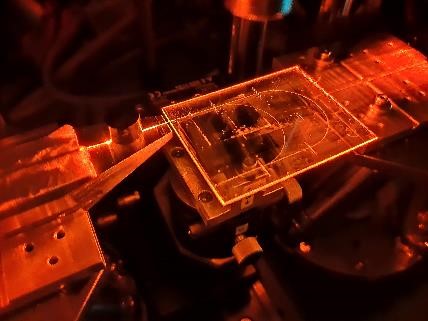High-Speed Integrated QKD System
R. Sax, A. Boaron, G. Boso, S. Atzeni, A. Crespi, F. Grünenfelder, D. Rusca, A. Al-Saadi, D. Bronzi, S. Kupijai, H. Rhee, R. Osellame, H. Zbinden
Photonics Research, 11(6), 1007-1014 (2023)
This work was a collaboration between the Quantum Technologies group at the University of Geneva, ID Quantique based in Geneva, the Institute for Photonics and Nanotechnologies CNR in Milan, and Sicoya GmbH in Germany.
You can read the full article here.
Our researchers have developed for the first time an integrated Quantum Key Distribution (QKD) system, which is able to transmit secure keys over large distances at very high rates.
QKD has been well-established now for many years: It exploits the inherent nature of quantum particles to generate secret keys between two parties who wish to securely communicate. Current implementations of QKD systems use a 'transmitter', which sends single-photon level encoded signals to a 'receiver' which can detect them. However, QKD has not yet been integrated into most real-world communications networks, due to the complexity and impracticality of the components used. Integrated photonics is a promising solution to this problem, allowing large numbers of components to be packaged together in a compact manner.

This research replicated state-of-the-art results achieved recently by experiments which used mainly fibre-based components. However, this work is ground-breaking in that the implemented system is vastly more simple and practical than previous implementations, paving the way for integration of similar systems into real-world communications networks. "The compactness, robustness and ease of manipulation of an integrated photonic system — with less components to verify when implementing or to troubleshoot in a network — improves the position of QKD as a technology for secure communication" explains lead researcher, Rebecka Sax.
Key features of these novel integrated components are their polarisation independence, which is a highly non-trivial feat to accomplish with integrated photonics, along with very low loss (on the order of 3dB).
Further work will look into housing the system in a simple rack-based structure.
More information can be found here.